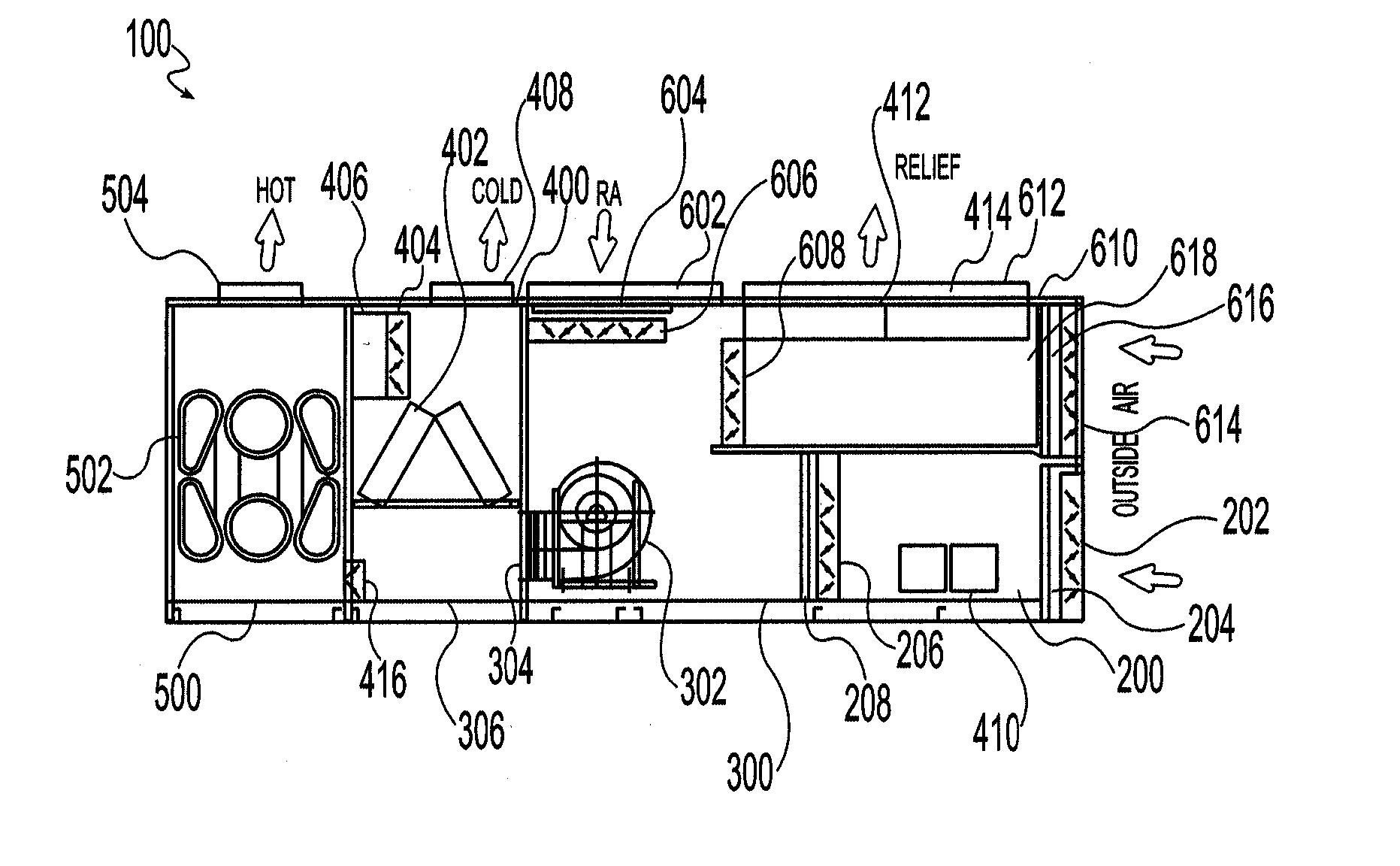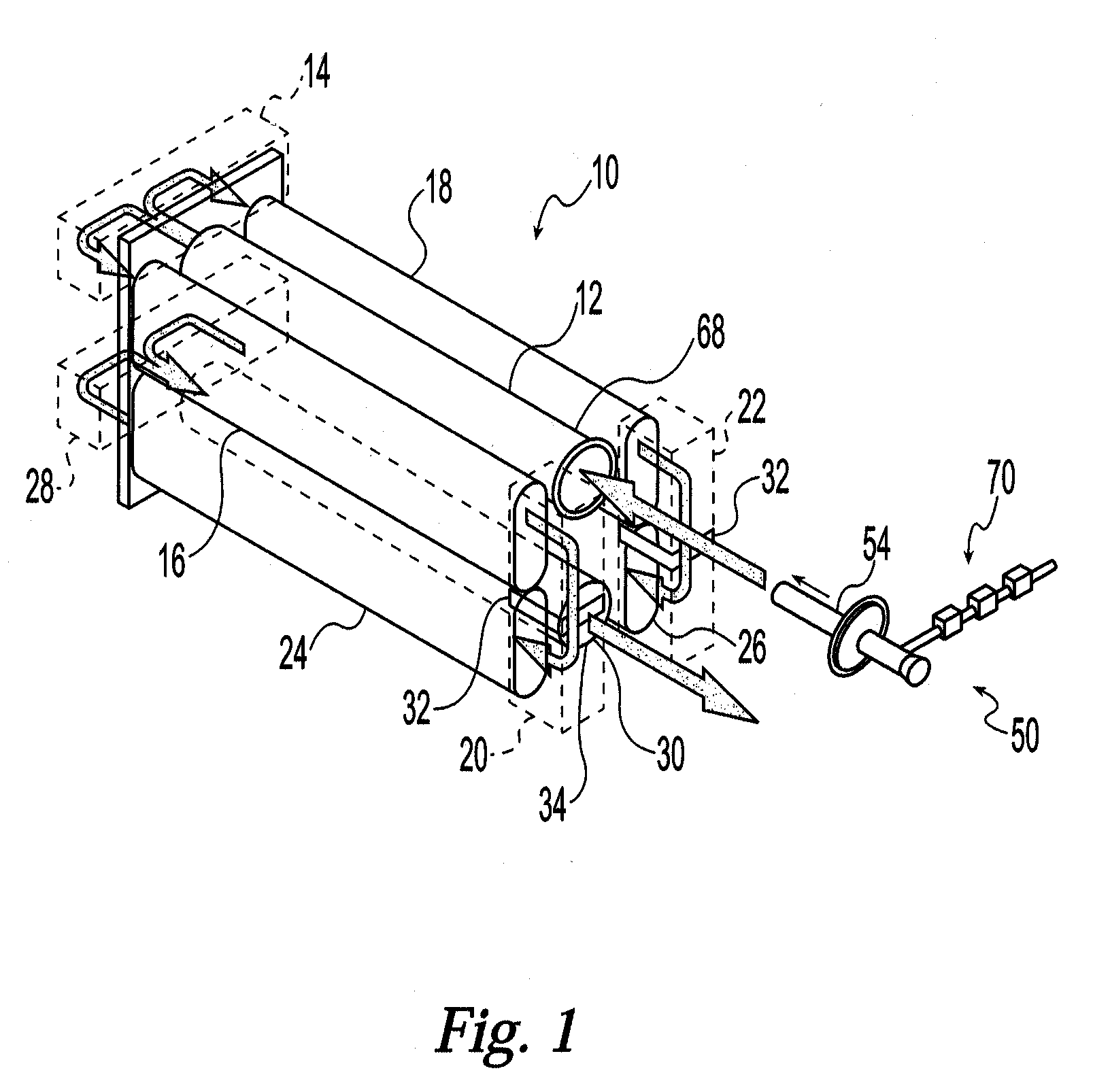Air Conditioning System
a technology of air conditioner and air conditioner coil, which is applied in the field of air conditioner systems, can solve the problems of reducing requiring significant space and energy. it can improve the efficiency and performance of the unit, improve the humidity control, and reduce the energy consumption of the condenser coil
- Summary
- Abstract
- Description
- Claims
- Application Information
AI Technical Summary
Benefits of technology
Problems solved by technology
Method used
Image
Examples
Embodiment Construction
[0023] The present invention provides a self-contained, fully-integrated heating and cooling system, apparatus, or unit for conditioning the air on the interior of a building or group of buildings. An exemplary embodiment of this apparatus includes a means for creating airflow through the apparatus, a section for cooling the airflow, a section for heating the airflow, a means for directing the airflow into the cooling section or into the heating section, a reheat device for tempering the airflow exiting the cooling section, a return air section for receiving air returned to the apparatus from the building interior, and a means for pulling the returned air out of the return air section and venting the returned air to the environment outside of the building.
[0024] In the exemplary embodiment, the reheat device is positioned between the cooling section and the heating section, and a portion of the cooled air exiting the cooling section is directed through the reheat device and is rehea...
PUM
 Login to View More
Login to View More Abstract
Description
Claims
Application Information
 Login to View More
Login to View More - R&D
- Intellectual Property
- Life Sciences
- Materials
- Tech Scout
- Unparalleled Data Quality
- Higher Quality Content
- 60% Fewer Hallucinations
Browse by: Latest US Patents, China's latest patents, Technical Efficacy Thesaurus, Application Domain, Technology Topic, Popular Technical Reports.
© 2025 PatSnap. All rights reserved.Legal|Privacy policy|Modern Slavery Act Transparency Statement|Sitemap|About US| Contact US: help@patsnap.com



